
Rimini is primarily known as a popular beach resort located on the Eastern coast of Italy, off the coast of the Adriatic sea.
However, there is a long beach, Rimini also has what to see and where to go. The city has preserved some interesting historical and architectural monuments that identify us to the middle ages.
The port of Rimini (Porto Canale di Rimini) is one of the most vibrant places in Rimini, presenting not only a straight line (takes yachts, pleasure boats and small commercial vessels), but also entertainment and even historical interest.
In the port of Rimini are:
- pierce the Levant (Molo di Levante Capitan Giulietti), the nose of which is located a restaurant and a monument to the Wives of seafarers (Monumento Alle Mogli Dei Marinai);
- yacht Marina, on the North side of which is a pier, from which there are nice views to the beach of San Giuliano, and the end of the pier is decorated with Stella Del Mare;
- the Ferris wheel, which offers panoramic views of the Marina, the beaches and the Adriatic sea.
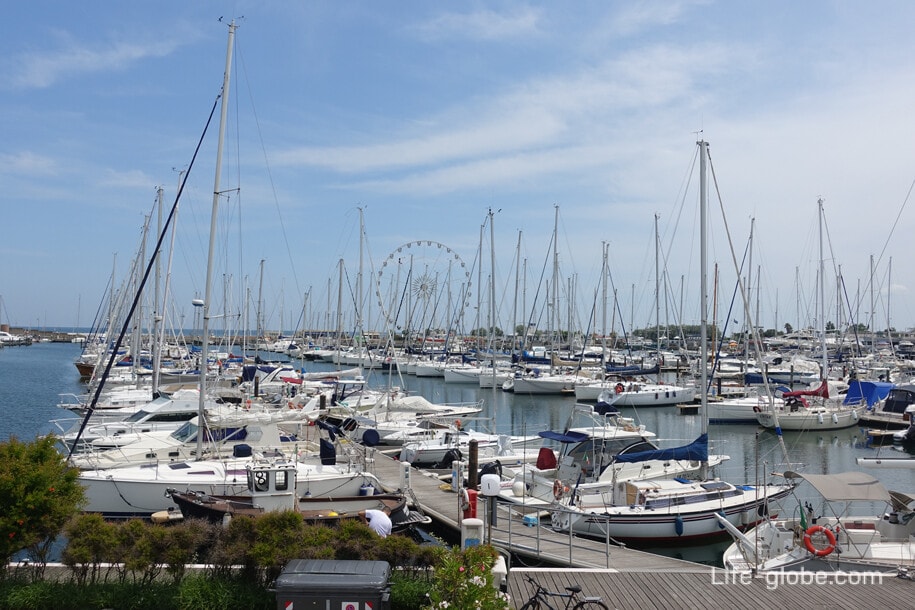
One of the favorite places for walks supports the waterfront of the port channel originating from the yacht Marina. In the channel one can see numerous boats, small yachts and sailboats. And along the canal are:
- monument to captain Giuseppe Giulietti (Al capitano Giuseppe Giulietti);
- Porta Galliana - old city gate of the thirteenth century, linking the old city with the port land along the canal of Rimini. Earlier the gate was part of fortification walls;
- a small Church Caritas Diocesana Rimini;
- 4 bridge, with scenic views of the canal and the surrounding area. Read more about marine port and channel in Rimini...
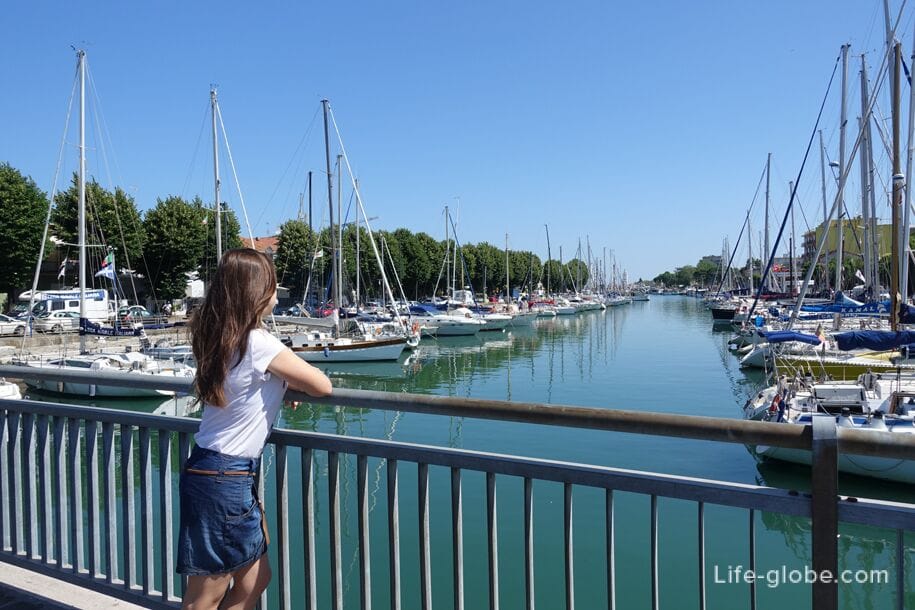
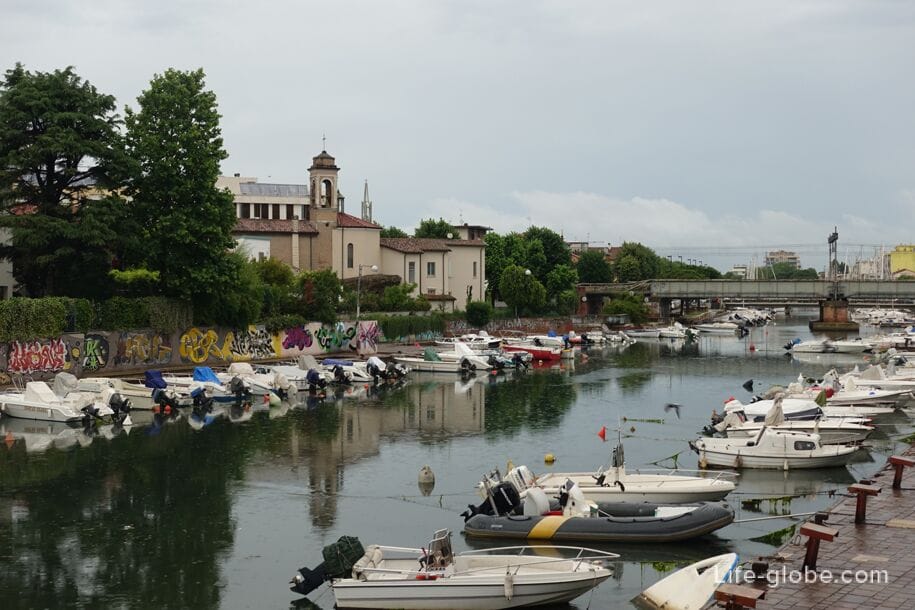
The district of San Giuliano is also known as the quarter Fellini. In this quarter the once rose Italian film Director Federico Fellini.
Currently, the greatest interest is the historic district of Borgo San Giuliano, where there are: a small square and the narrow cobbled streets, on both sides of which are close to each other are the old colorful buildings, the facades of which you can see drawings that represent characters and places from the films of Federico Fellini. There are also several churches, among which is the Church of San Giuliano Martyr (Chiesa San Giuliano Martire). Read more about the historical quarter of San Giuliano...
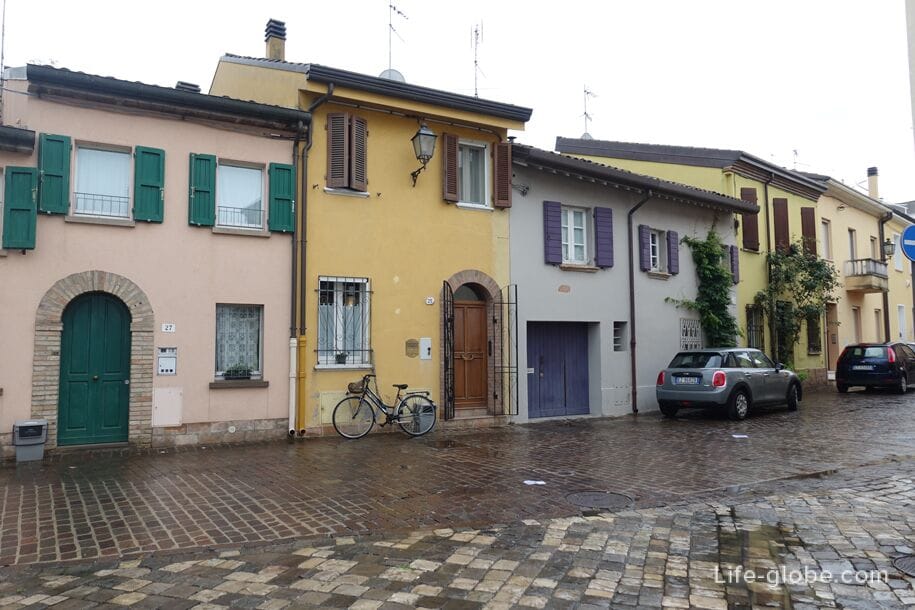
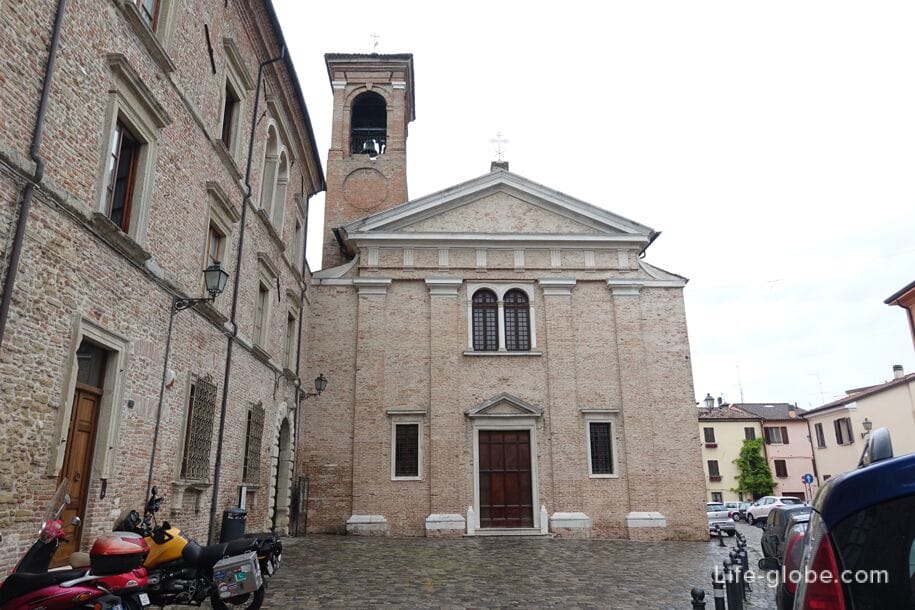
Bridge of Tiberius (Ponte di Tiberio), also known as the Augustus bridge (Pons Augustus) is the oldest bridge of Rimini is currently an architectural monument and connects the old centre of Rimini and San Giuliano.
Initially, the construction work on the construction of the Tiberius bridge began during the reign of Augustus and finished in 20 years BC, during the reign of his successor, Emperor Tiberius Julius Caesar Augustus, in whose honor and named this the Roman bridge. Read more about the bridge of Tiberius in Rimini...
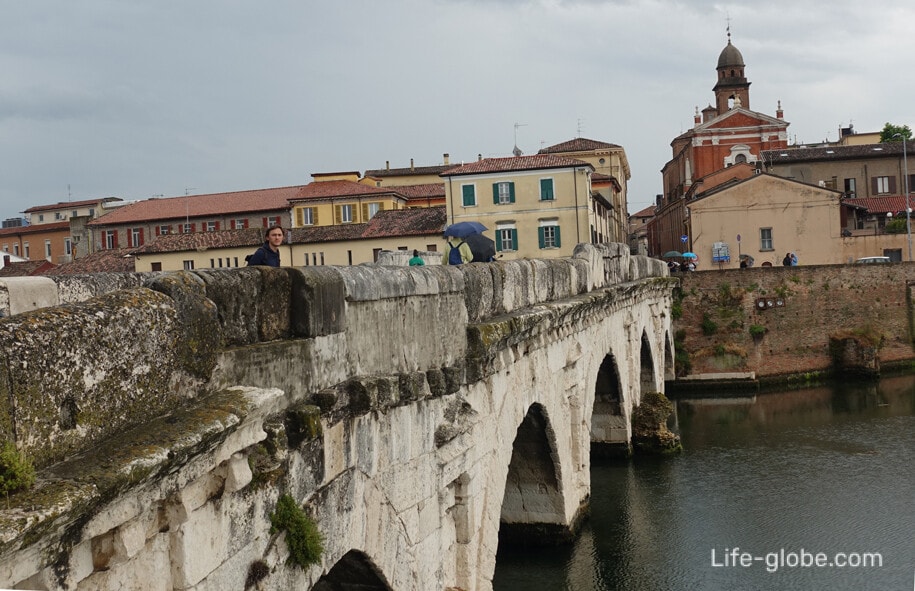
The old town of Rimini - a storehouse of historical and architectural values.
The main dostoprimechtelnostyami the old town of Rimini are:
The triumphal Arch of Augustus (Arco di Augusto) - marks the main entrance to the old centre of Rimini. The arch of Augusto was built in 27 BC, then it was a city gate and was built into the defensive walls of the city, marking a main road in Rimini.
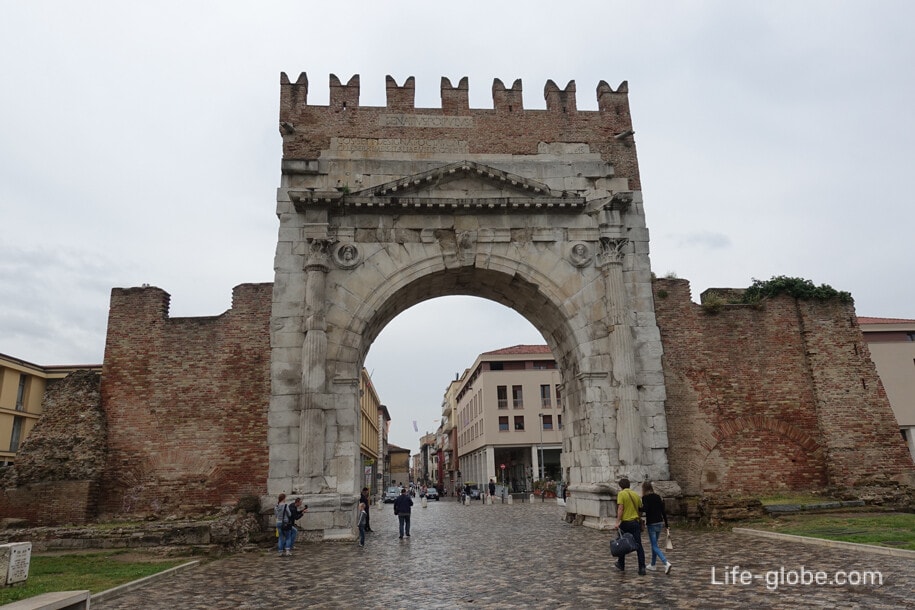
Three Martyrs square (Piazza Tre Martiri) is one of the Central squares of the historical centre of Rimini plays an important role in the formation and life of the city past centuries.
The square is located the Roman forum, where his legions were Julius Caesar. The history of the square dates back from the 2nd century BC. In the middle ages the square was the market place, as well as knightly tournaments.
In Piazza Tre Martiri concentrated famous sights such as:
- Palace Brioli and clock tower, erected in the 16th and 17th centuries and is an undoubted jewelry not only the square but the whole of the historical part of Rimini;
- octagonal grey-white Church of Sant Antonio with a green roof;
- monument to Caesar;
- column of Julius Caesar, commemorating the place from which Caesar addressed to the soldiers of the XIII Legion, after passing the Rubicon;
- historic excavations indicating the presence in this place of the ancient forum and the churches. Read more about square Tre Martiri in Rimini...
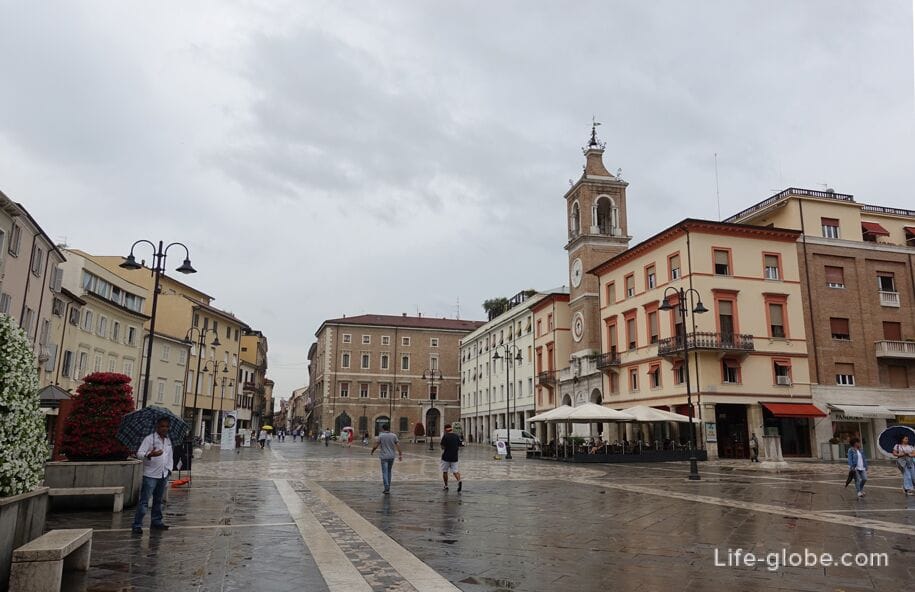
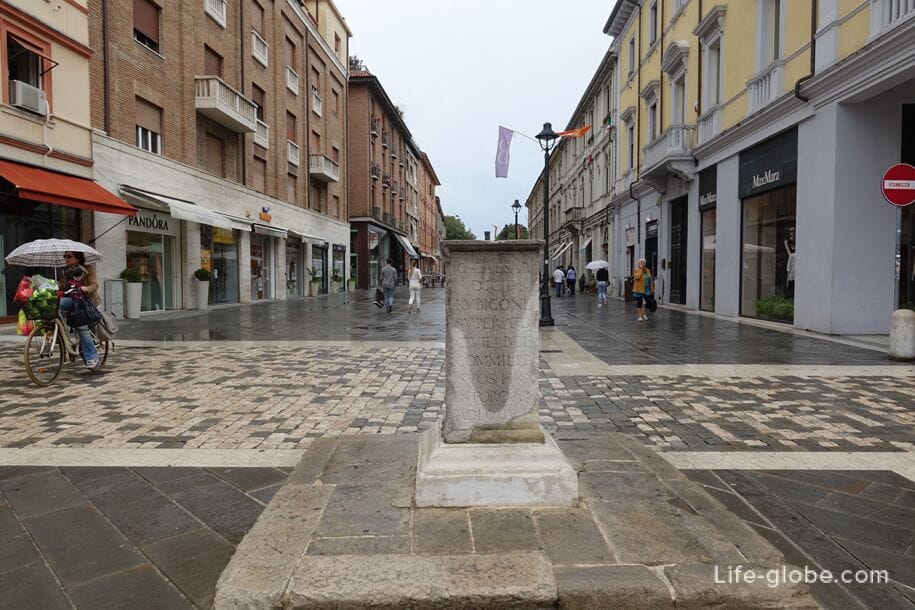
Piazza Cavour - once played an important role and was the center of city life.
Attractions are the Piazza Cavour quite diverse. With one side of the square are shops, cafes and the old fish market, and on the other - lined up in a row of historic buildings Dating back to different eras, the construction of which was carried out starting from the 13th and the 19th centuries.
Sights Piazza Cavour:
- a monument to Pope Paul the fifth. Statue of Paul V was erected by the municipality of Rimini and opened in 1614;
- Pigna fountain (Fontana della Pigna). The fountain was built in 1543 and was the only resource of drinking water of Rimini until 1912;
- Palazzo Garampi, built in 1562;
- The Palazzo del Arengo (Palazzo dell'Arengo). In the days when public justice was, on the porch of the building was stone, on which insolvent debtors were condemned to three strokes on the bare bottom;
- Palazzo del Podesta. On the ground floor you can see three Gothic arches, once the Central arch hung a rope intended for public hangings of criminals;
- the Teatro Galli, which opened its doors in 1857;
- old fish market (La Pescheria), which is one of the characteristic places in the city. In the corners of the market, there are fountains, where many years ago the merchants used to wash the fish. Read more about Piazza Cavour in Rimini...
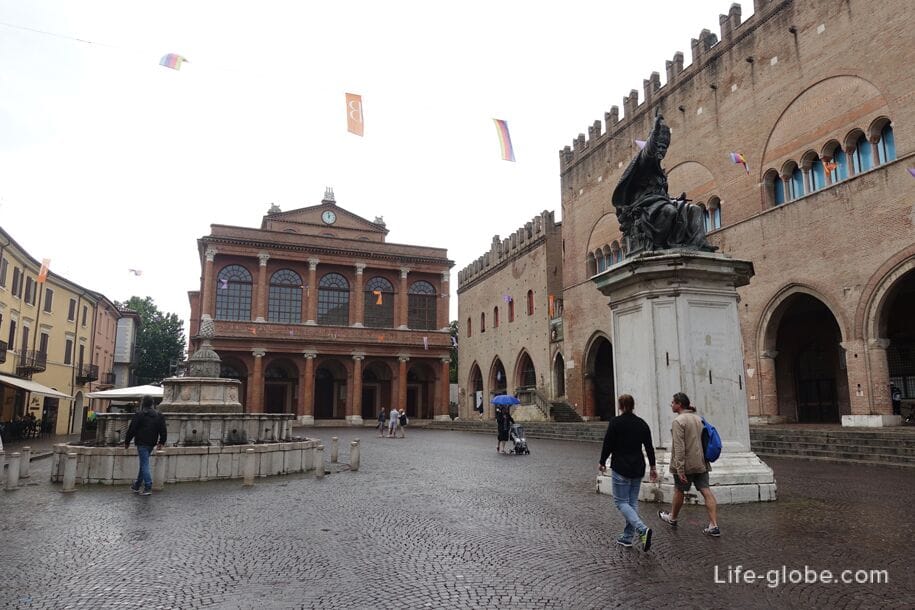
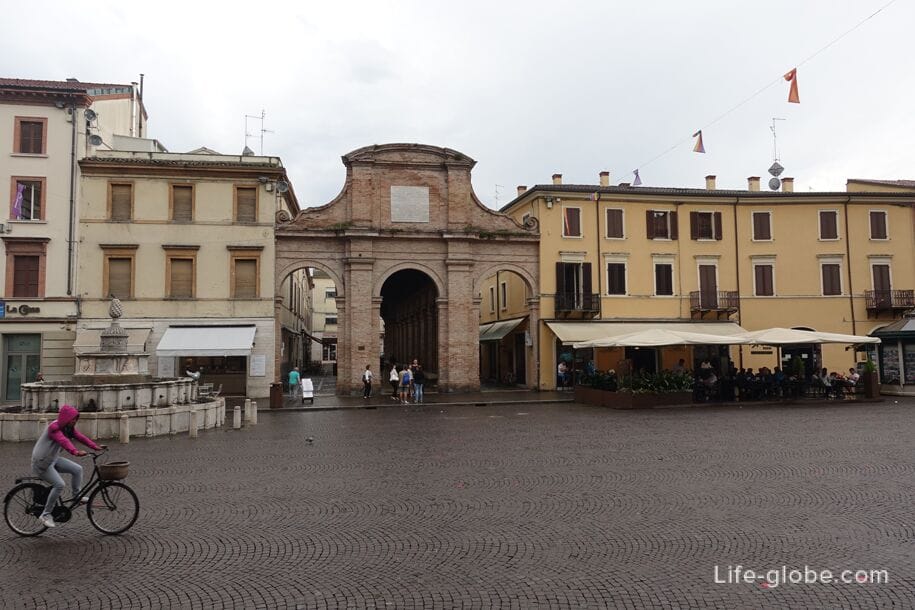
Tempio Malatestiano is the Cathedral of Rimini, built in the mid-fifteenth century as a tomb for the ruling Malatesta, hence the name of the temple. Officially the Cathedral is named after St. Francis, but this name is unpopular among tourists and locals.
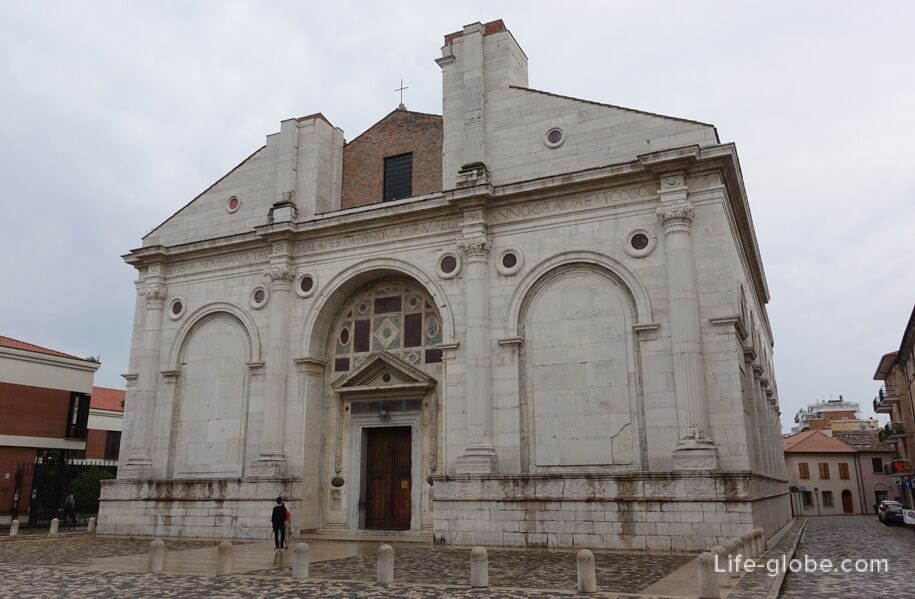
Castel Sismondo, built in the 15th century, is currently one of the integrity. The Central part of the castle was the residence Malatesta.
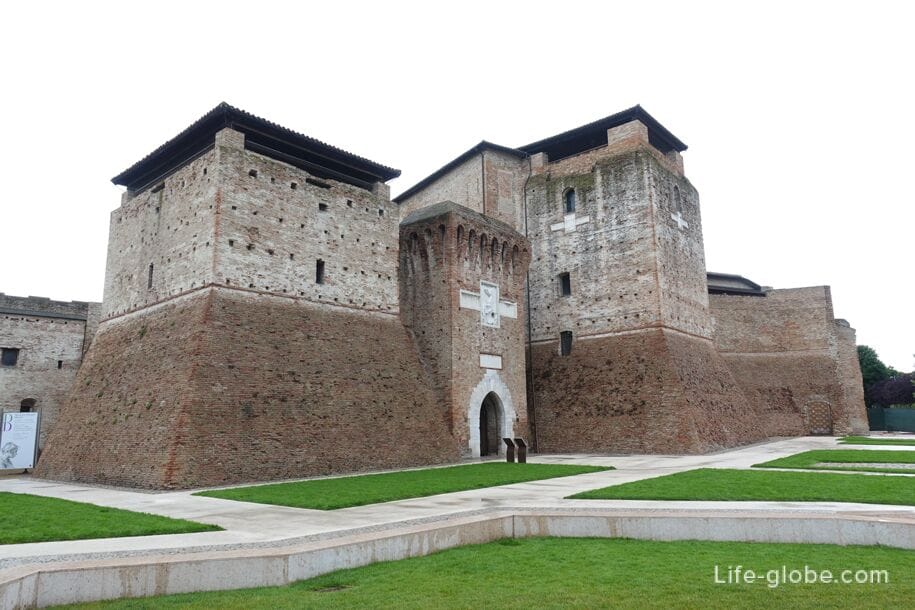
Port Montanara - one of the gates of the city Amerinus (now Rimini), built in the 2nd century BC.

Piazza Luigi Ferrari, created in 1888, is notable in that it contains:
- war memorial, erected in 1926 in honor of the fallen in the First world war;
- the Surgeon's house (Domus del Chirurgo), built in the second half of the second century and then, being a Roman house. Was discovered in 1989 and opened to the public on 7 December 2007 as a Museum. Inside the building was discovered one of the most complete sets of surgical instruments from the Roman era;
- catholic Church of St. Francis Xavier Church, better known as Pokrovskaya Church (Chiesa del Suffragio), founded in the early eighteenth century by the Jesuits.
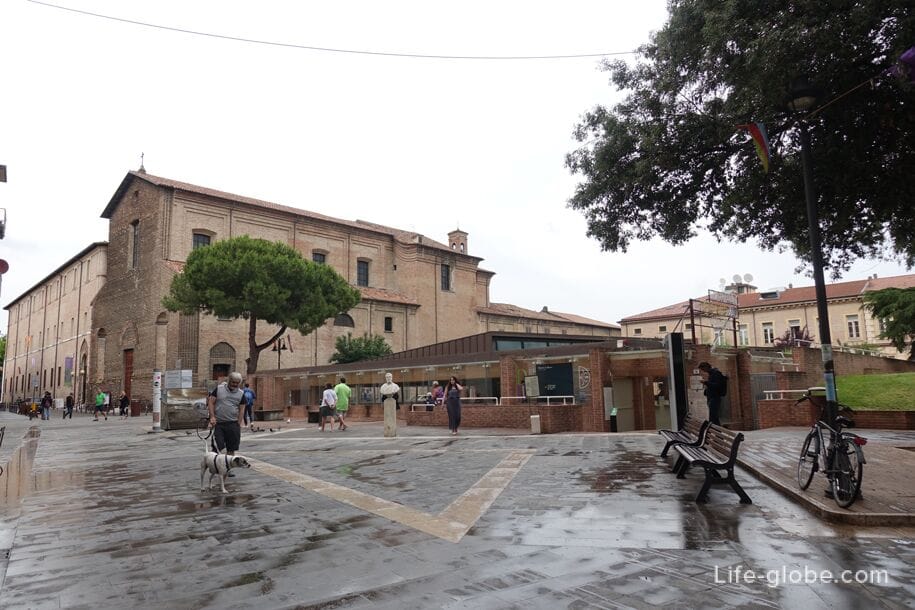
The Roman amphitheater in Rimini (Anfiteatro romano di Rimini) was built in the second century ad and was used mainly for Gladiator show. As tradition for this type of buildings, the amphitheater was built on the periphery of the historical center, close to the sea, to enhance the experiences of viewers. Currently, from the amphitheatre there are only some elements.
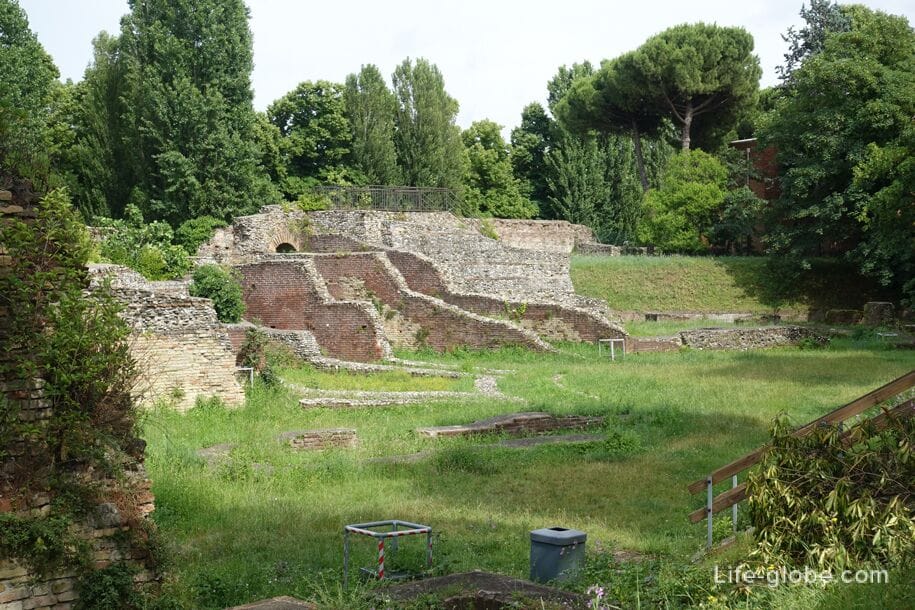
Teatini square (Piazzetta Teatini) - where you can see the echoes of past centuries in the ruins of the Church of the fathers Teatini (Chiesa dei Padri Teatini). The Church was almost completely destroyed by bombing during the Second world war. Currently there is only one wall of the Church overlooking the gardens of Piazza Teatini.
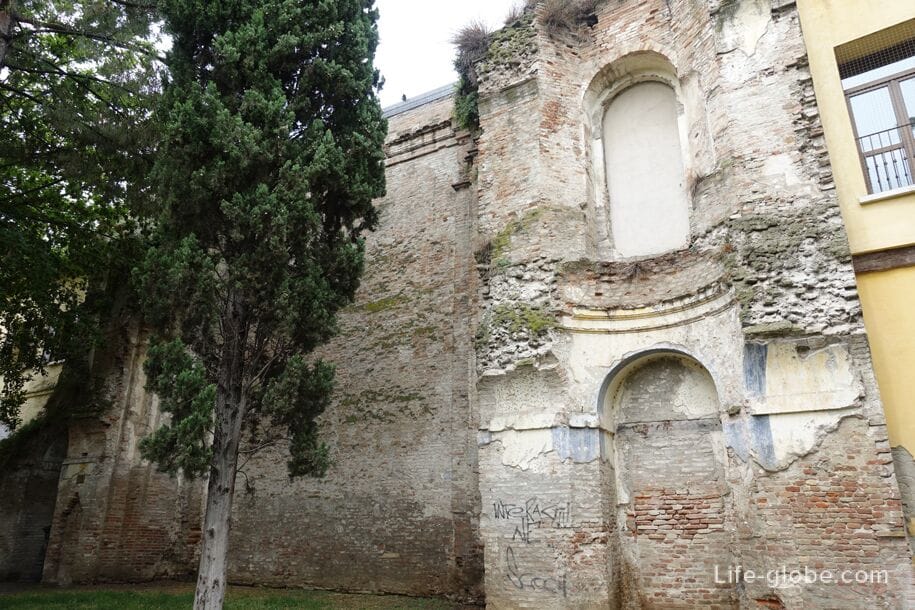
Palazzo Lettimi is one of the most prestigious buildings of the Renaissance, built in the early 16th century. Currently, you can only see the remains of luxury, "the survivors" after the bombing during the Second world war.

In the old town and concentrated around itself a considerable number of churches. The most famous churches in old town are:
- church of Santa Maria in Corte (Chiesa di S. Maria in Corte o dei Servi), built in 1317 in place, donated by the family of Malatesta to the order of Servants of Mary;
- the Church of Santa Maria ad Nives (Chiesa di Santa Maria ad Nives). Sources take us to the 14th century, it was the first mention of the Church. In the mid-18th century, the Church was completely rebuilt. As of 2016 the walls of the Church runs the visitor centre;
- the Church of Sant'Agostino (Chiesa di Sant'Agostino), which was ruled by the Augustine fathers from the 13th century until the Napoleonic suppressions, it was first mentioned in 1069 as dedicated to Saint John the Evangelist;
- church or sanctuary of the Madonna della (Santuario della Madonna della Misericordia in Santa Chiara) is located near the arch of Augustus. Read more about the old town of Rimini and its attractions...
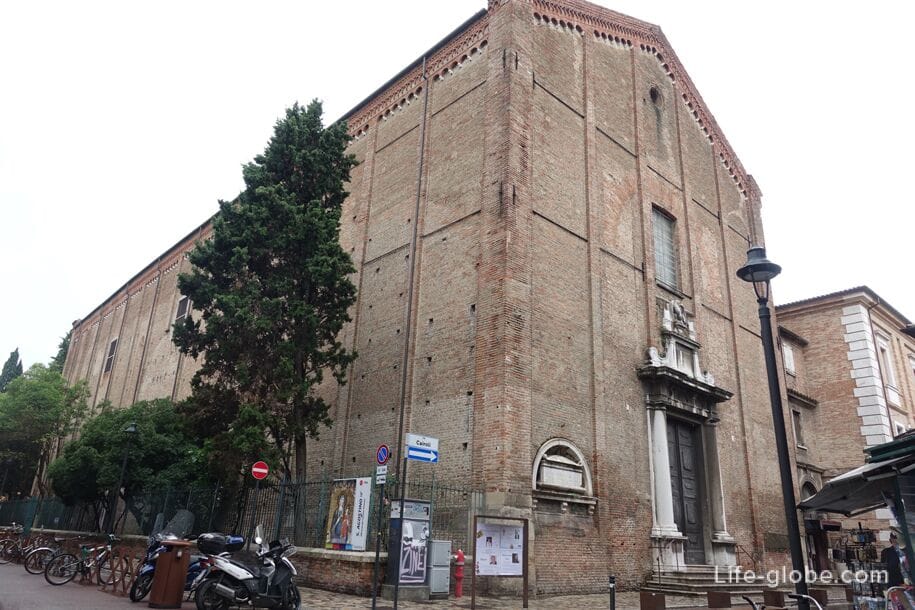
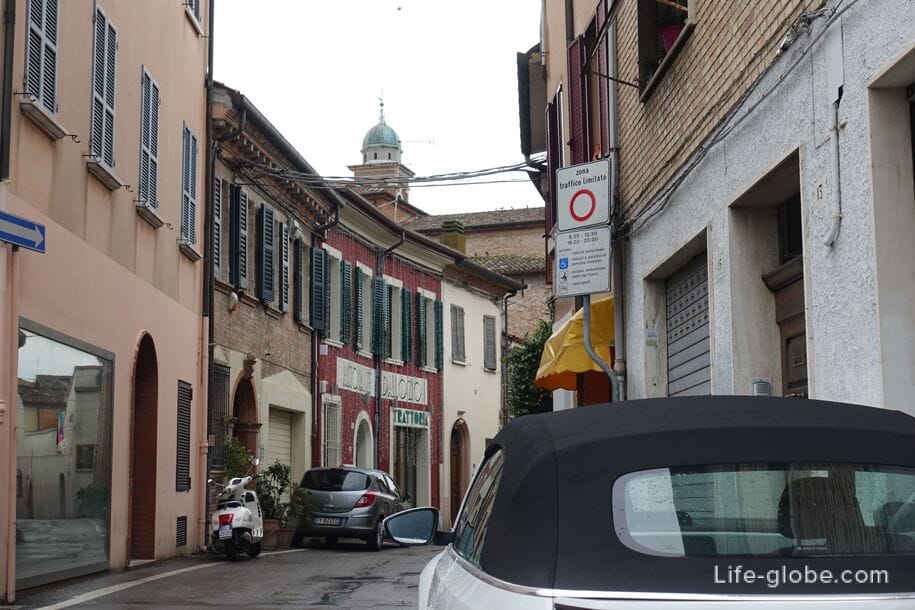
Outside the "old city walls" is still a few interesting sights:
Catholic Church of Mary Mediatrix (Parrocchia Santa Maria Ausiliatrice) is situated close to the beaches of Rimini, one of the seaside tourist streets - Viale Regina Elena.
The Church was built in the early twentieth century. In the sixties, after the growth of the tourist flow to the city, the Church structure has undergone some changes - created a new chancel and apse, after which the capacity of the Church has reached 600 people. Read more about one of the most touristic streets of Rimini...
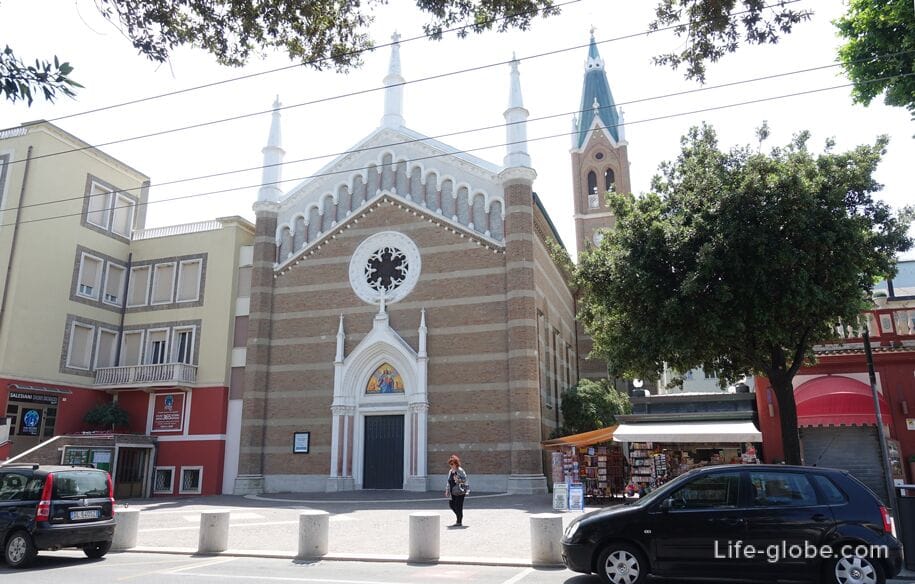
The Catholic Church of San Nicolo del Porto (Chiesa di San Nicolo al Porto). Previously, the Church was dedicated to San Lorenzo, but in the 12th century with the appearance in the walls of the Church of the relics of San Nicola di Bari, the name was changed to modern.
In 1087 the relics of Saint Nicholas were stolen from the Church of St. Nicholas in the ancient town of Myra (now Turkey) and brought to Bari. In the summer of 1177 of them (left humerus) was stolen by a German Bishop named Goto. The ship which had to return to Germany, makes an emergency stop in Rimini. Considering it a sign from above, the Bishop confessed to the theft and left the relic in the Church of San Lorenzo, which was previously located outside the city walls, near the port and were mainly sailors. After that event, as suggested, and changed the name of the Church of San Nicolò, from the shape of the contraction of the Latin name "St. Nicholas".
During explosions, on 27 November 1943 the Church was almost completely destroyed. After the war he built a new Church, which opened April 10, 1955, the Day of Easter. Inside the Church is a crucifix of the fifteenth century, preserved under oblomkami from the bombing. Frescoes of the fourteenth century, despite repeated attempts to save them, remain in very questionable conditions.
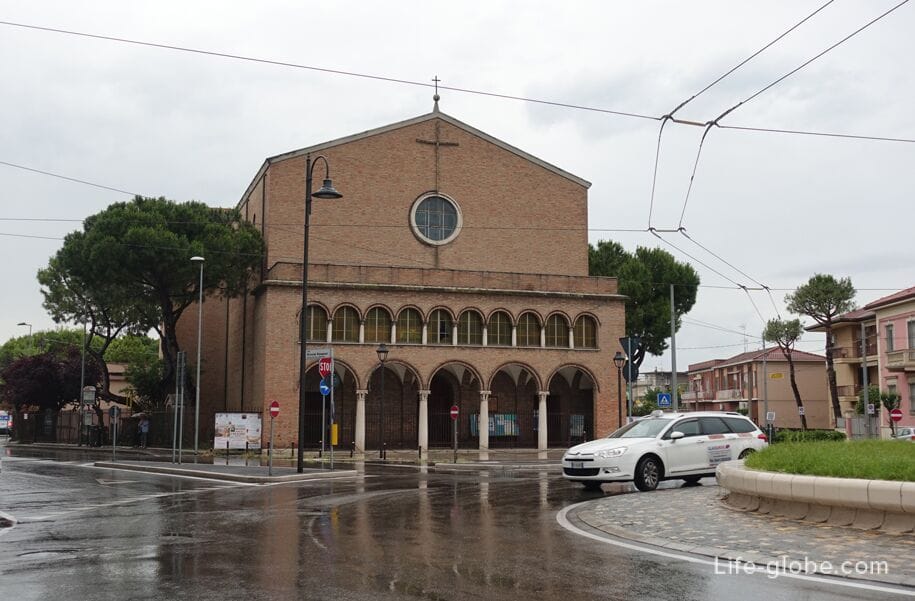
The Church of San-Gaudenzio (Parrocchia di San Gaudenzo), built in 1856. The building was destroyed by bombing in 1944. In the postwar period on the site of the former Church was built the present large Church.
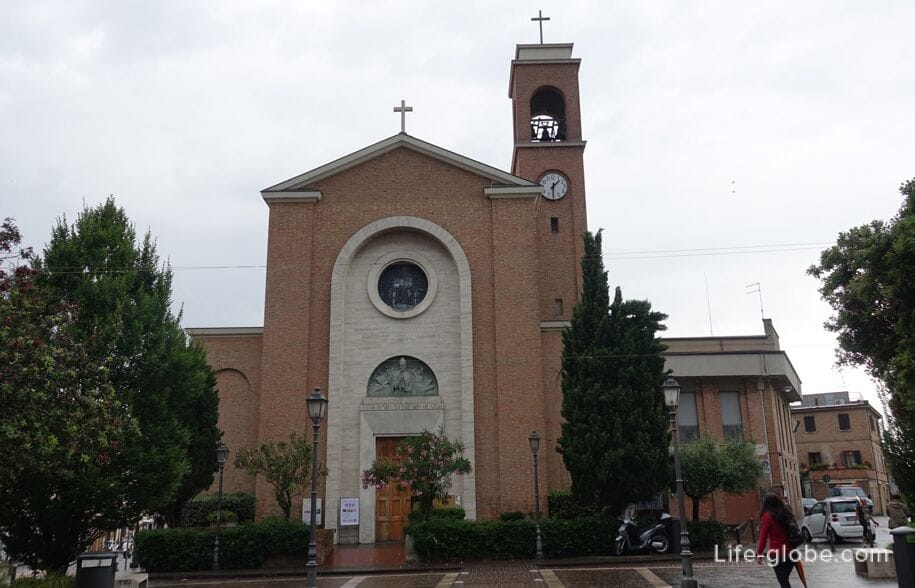
The Catholic Church of San Giovanni Battista (Chiesa di San Giovanni Battista) was built somewhere in the 5th century under the patronage of Galla Placidia. The Basilica was destroyed during the disasters of the 8th century. To 1144 on the site of the former shrines there was this Church dedicated to John the Baptist. In 1573 the Church was assigned to the order of Carmelites, and in 1605 joined to the parish of San Gregorio. In the years 1767-1772 Carmelita instructed Gaetano Copioli to rebuild the Church in the late Baroque style. In 1797, the Church and monastery were suppressed and given to the Capuchin monks in their possession till 1805, when cercos again became a parish.
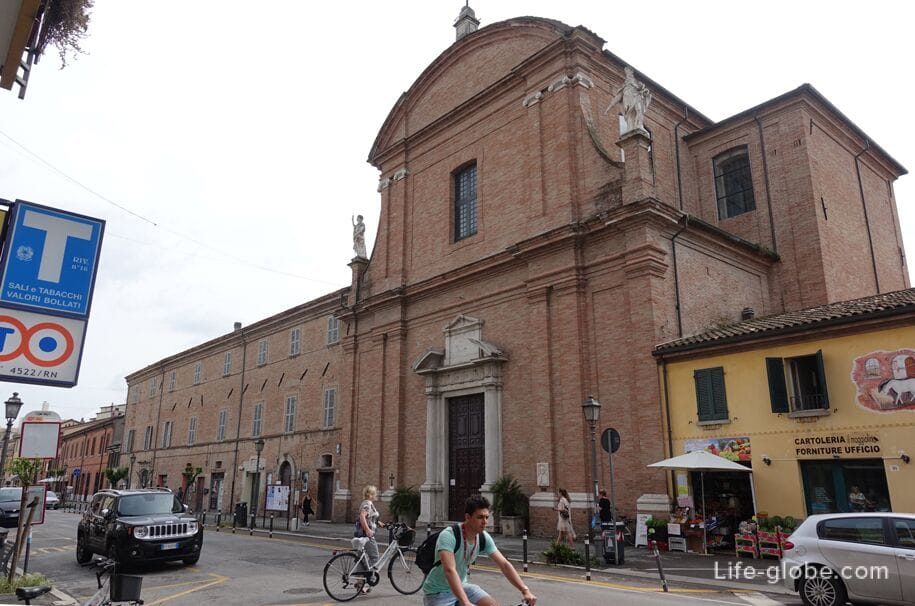
As well as, the convent of Santo Spirito-Capuchin (Convento Santo Spirito Frati Cappuccini), located at: Via della Fiera, 5 and Church of Santa Maria del Colonnel (Chiesa di Santa Maria della Colonnela), built in 1510 which is located at: Via Flaminia, 96.
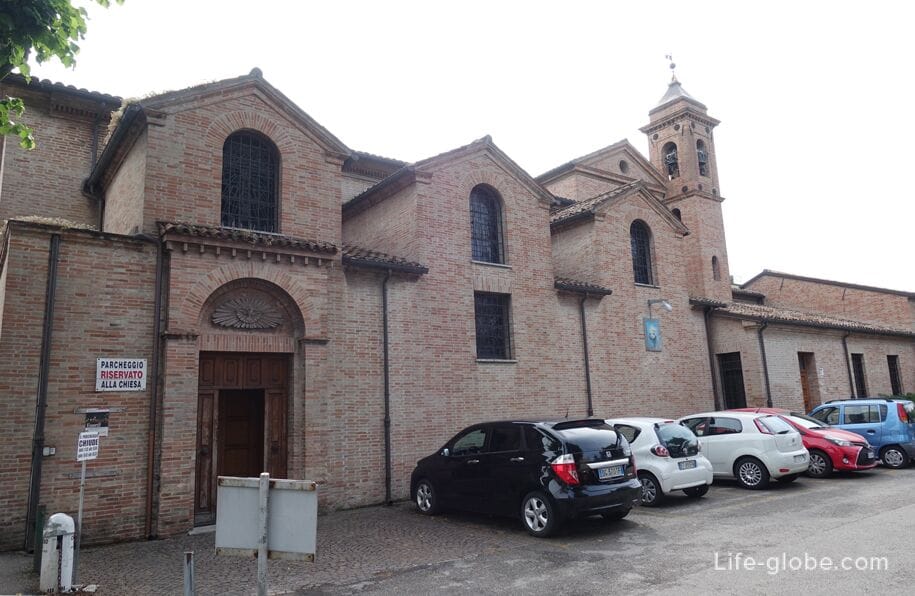
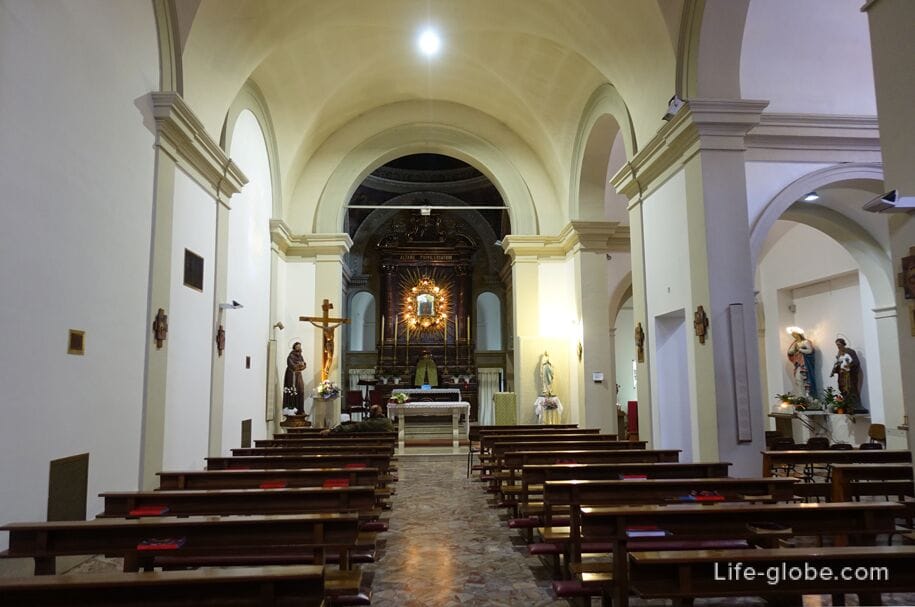
Park Federico Fellini (Parco Federico Fellini) - one of the city parks in Rimini, part of an extensive system of green areas located inside the urban area and is one of the leading and most visited parks of Rimini.
In this Park there are two interesting sights of the city:
- fountain of the Four horses (Fontana dei Quattro cavalli), located in the heart of the Park;
- the huge size of the camera, not giving to forget about the fact that the Park is named after the famous Director. Read more about Fellini Park in Rimini...


All accommodation facilities in Rimini, from budget to luxury, you can view and book here